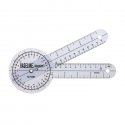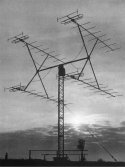My estimate is that ARH missiles would have a homing basket from anywhere from <1nm to about 3nm against a VLO missile like LRASM. Smallish missiles like AMRAAM and PL-15 would be on the lower end of the range, while large missiles like HHQ-9B may be closer to the upper range.
Now whether they manage to acquire the LRASM and maneuver into intercept before they zoom by, is an altogether different question.
Instead of assuming that a VHF radar can't provide a weapons quality track for an HHQ-9, why don't you do a simple analysis of radar accuracy versus missile kinematics
Mid-course guidance of HHQ-9 to an LRASM
If a VHF radar detects an LRASM at the radar horizon (30km) and launches an HHQ-9 SAM immediately, 1st intercept is at a distance of 24km.
At that distance, with an angular accuracy of +/- 1degree, a VHF radar localises an LRASM to a line across the horizon which 838m long.
So a SAM would be directed to the centrepoint of that line.
HHQ-9 X-Band acquisition of LRASM
And let's use a conservative figure of 2nm (3.7km) for an HHQ-9 X-Band seeker to detect an LRASM.
So if we use a lower bound of a (3.7-0.4km) detection range for the HHQ-9, it still means the LRASM is definitely detected.
There is a maximum angle of about 7degrees from the HHQ-9 seeker
HHQ-9 kinematics
With a worst case distance of 3.3km, there are 2.3seconds for the HHQ-9 to manoeuvre and hit the LRASM
Now, given that fighter jets are expected to undertake 9G manoeuvres to evade missiles, we can reasonably assume that SAMs are designed with 10G+ acceleration for terminal manoeuvres.
If so, an HHQ-9 at 10G can manoeuvre to cover a line which is 581m across, which covers 72% of the possible LRASM locations.
So in summary, it is worth launching SAMs once a VHF radar first detects an LRASM at the radar horizon of 30km.
Then there is the option to launch multiple SAMs to increase the pk.
And the LRASMs become progressive easier to hit in the next engagement rounds.
On the 1st engagement round at 24km, the LRASM is anywhere along a 838m long line across the horizon.
On the 2nd engagement round at 19km, the LRASM is anywhere along a 663m long line across the horizon.
On the 3rd engagement round at 16km, the LRASM is anywhere along a 558m long line across the horizon.
On the 4th engagement round at 13km, the LRASM is anywhere along a 453m long line across the horizon.
So I think the CMO assumption of first engagement (LRASM versus Type-052D) starting at 13km is wrong.
By then, I think an LRASM should have already been subject to 4 full-length engagement cycles.


